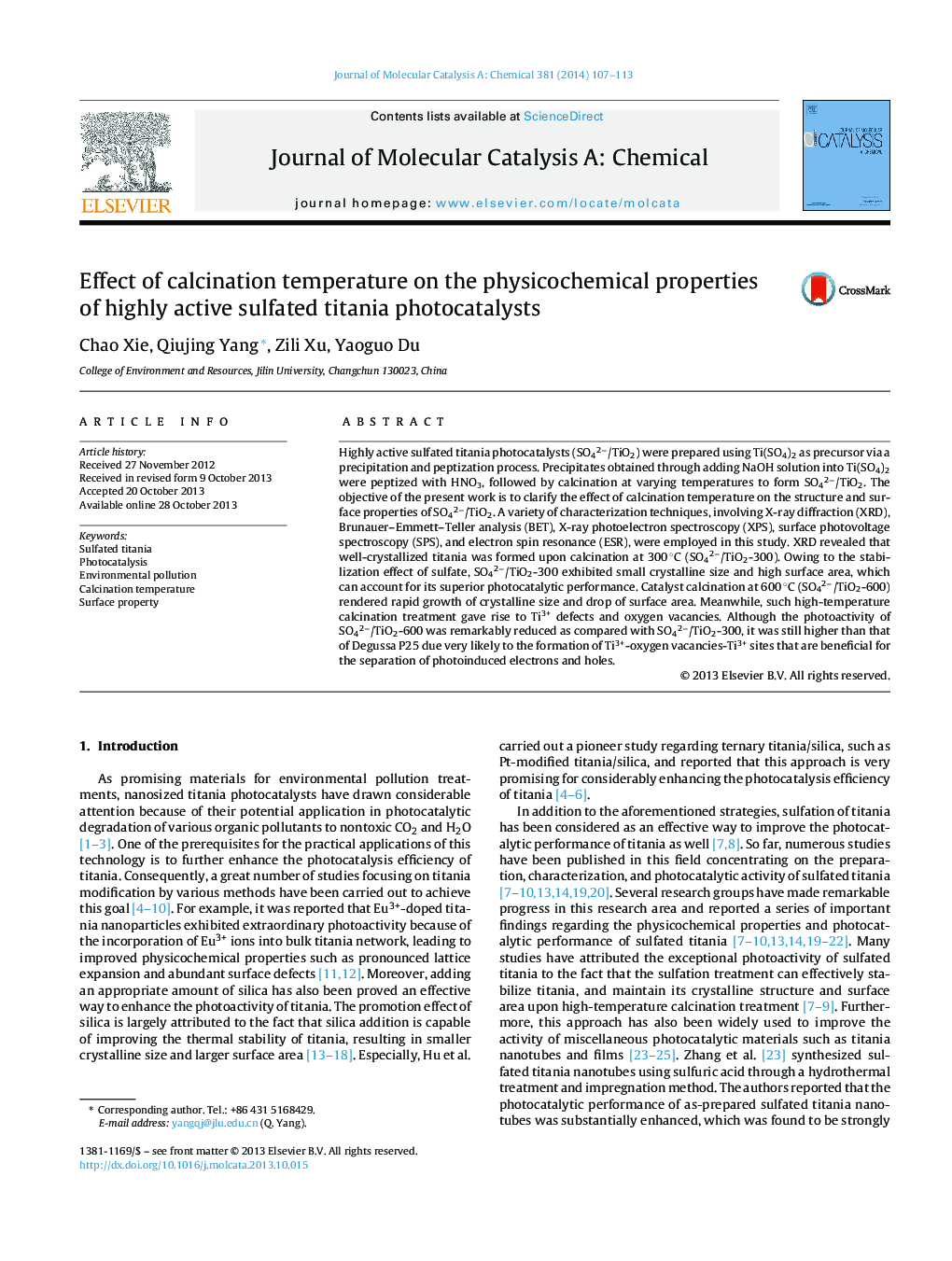| کد مقاله | کد نشریه | سال انتشار | مقاله انگلیسی | نسخه تمام متن |
|---|---|---|---|---|
| 65474 | 48392 | 2014 | 7 صفحه PDF | دانلود رایگان |
• Highly active sulfated titania was prepared using Ti(SO4)2 as precursor.
• Calcination is critical for tuning the photoactivity of sulfated titania.
• The superior activity of sulfated titania was explained.
Highly active sulfated titania photocatalysts (SO42−/TiO2) were prepared using Ti(SO4)2 as precursor via a precipitation and peptization process. Precipitates obtained through adding NaOH solution into Ti(SO4)2 were peptized with HNO3, followed by calcination at varying temperatures to form SO42−/TiO2. The objective of the present work is to clarify the effect of calcination temperature on the structure and surface properties of SO42−/TiO2. A variety of characterization techniques, involving X-ray diffraction (XRD), Brunauer–Emmett–Teller analysis (BET), X-ray photoelectron spectroscopy (XPS), surface photovoltage spectroscopy (SPS), and electron spin resonance (ESR), were employed in this study. XRD revealed that well-crystallized titania was formed upon calcination at 300 °C (SO42−/TiO2-300). Owing to the stabilization effect of sulfate, SO42−/TiO2-300 exhibited small crystalline size and high surface area, which can account for its superior photocatalytic performance. Catalyst calcination at 600 °C (SO42−/TiO2-600) rendered rapid growth of crystalline size and drop of surface area. Meanwhile, such high-temperature calcination treatment gave rise to Ti3+ defects and oxygen vacancies. Although the photoactivity of SO42−/TiO2-600 was remarkably reduced as compared with SO42−/TiO2-300, it was still higher than that of Degussa P25 due very likely to the formation of Ti3+-oxygen vacancies-Ti3+ sites that are beneficial for the separation of photoinduced electrons and holes.
Figure optionsDownload high-quality image (107 K)Download as PowerPoint slide
Journal: Journal of Molecular Catalysis A: Chemical - Volume 381, January 2014, Pages 107–113
